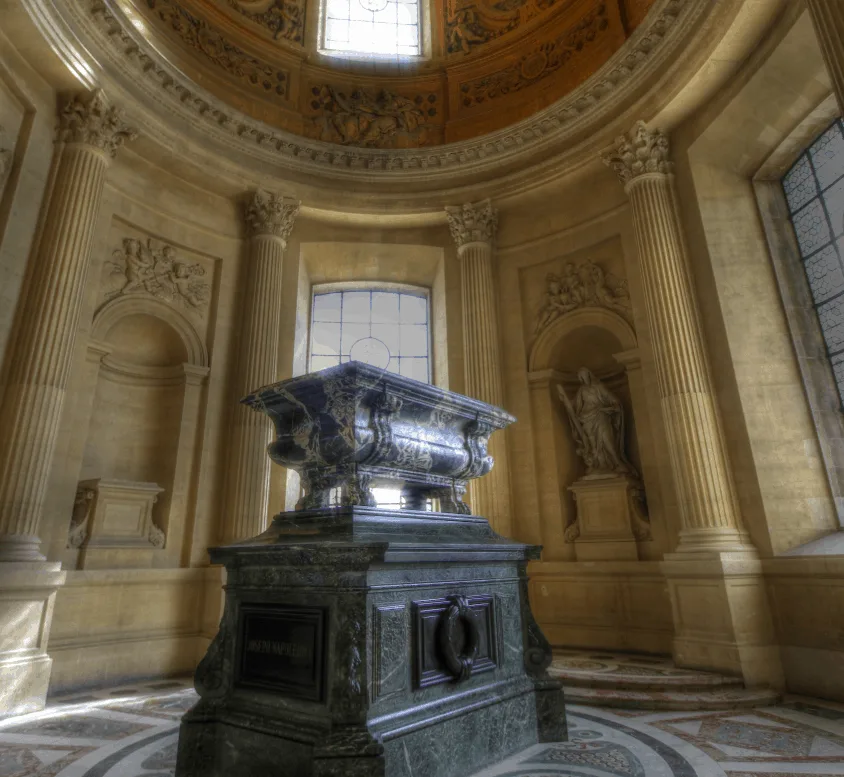If there’s one place to learn about the extensive history of the French military, then this is it.
In this post, You’ll discover the ultimate list of facts about Les Invalides, one of the most famous historical buildings in Paris.
1. What is Les Invalides?
Les Invalides is a complex of museums and monuments related to the military history of France located in the country’s capital, Paris.
Apart from the museums and monuments it also contains a hospital and a retirement home for war veterans, the reason why it was built in the first place, and how the complex got its name.

2. The complex has multiple names
“Les Invalides” literally translates to “The Disabled,” which refers to the soldiers who suffered injuries during one of the many wars that the country fought over the centuries and during the French Revolution.
The other names that the complex goes by are “Hôtel national des Invalides,” or simply “Hôtel des Invalides.”

3. It’s located close to the most famous structure in Paris
Les Invalides is located in the 7th arrondissement of Paris, which is one of the districts in the center of Paris on the left bank of the River Seine and is home to several important monuments and museums.
The most notable museums are the Musée d’Orsay, a museum dedicated to impressionists, the Musée Rodin, dedicated to sculptures of Auguste Rodin, and the Musée du Quai Branly, a museum featuring indigenous art from all over the world.
In the 7th arrondissement, you can also find the most famous structure in all of Paris, the Eiffel Tower, which is located just a few hundred meters west of Les Invalides.

4. The project was ordered by the Sun King himself

Les Invalides was built at the end of the 17th century to serve as a hospital and resting place for wounded and aged soldiers. The construction of the complex was ordered by Louis XIV on November 24 in the year 1670.
Yes, Louis XIV is the Sun King who built himself one of the most extravagant palaces in human history, the Palace of Versailles.
With this in mind, Les Invalides was bound to be something special from the get-go.
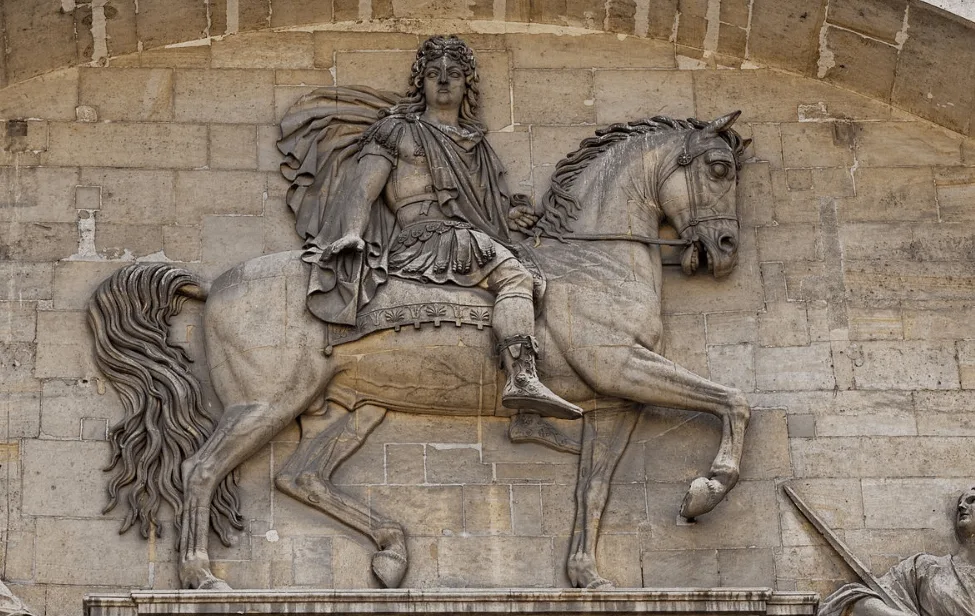
5. Les Invalides is a huge complex
As to be expected, Louis XIV didn’t hold anything back when he ordered his architect, a man named Libéral Bruant (1635-1697), to construct Les Invalides.
At the time, the site was located well outside of the city center of Paris in a place called “The Plain of Grenelle.” The area of the building alongside the river covers about 196 meters (643 ft).
The construction of the entire complex of Les Invalides was completed in the year 1676.
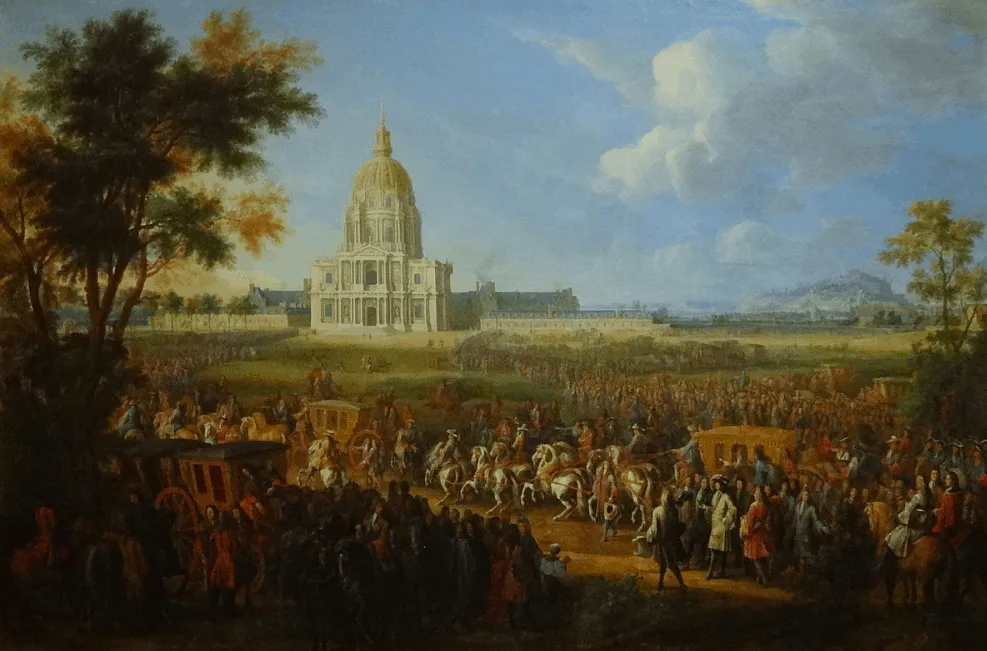
6. Les Invalides has 15 courtyards
The building has a grand total of 15 courtyards, including a huge one called “Le Cour d’Honneur” which was built to hold military parades.
Yes, it’s indeed a massive building!
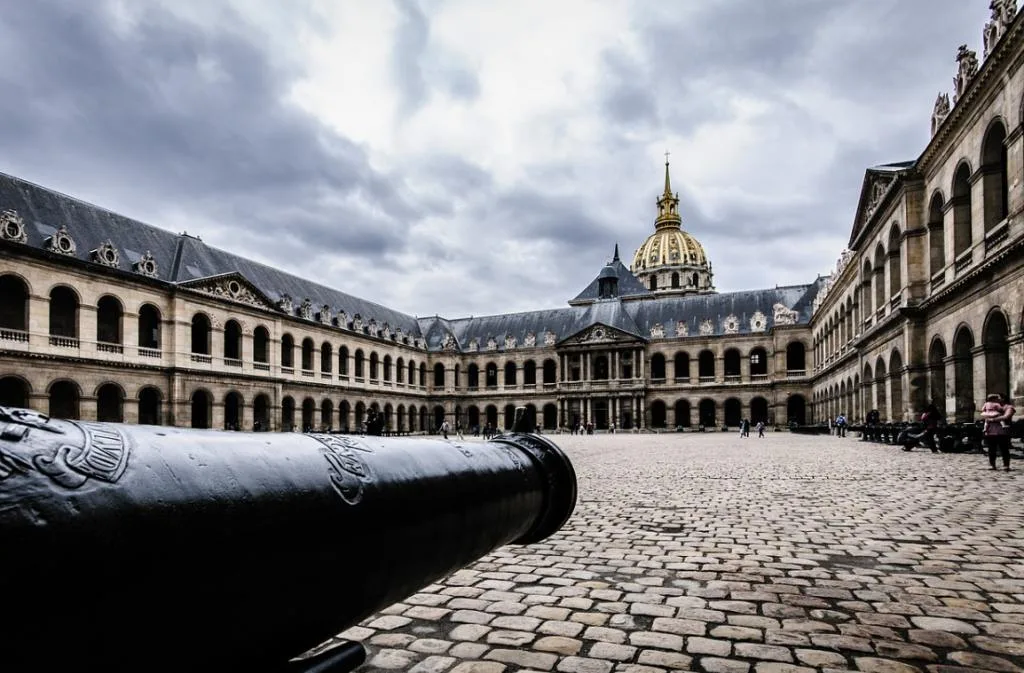
7. There are 2 churches at Les Invalides
Just after the building was completed and the veterans were being housed in the “Hôtel des Invalides,” it came to the attention of Louis XIV that there should be a place for worship inside the compound of the complex.
Therefore, he commissioned French Baroque architect Jules Hardouin-Mansart to build a chapel in the year 1676.
This chapel combined a royal chapel and a chapel dedicated to the veterans and as etiquette prescribed, both chapels had a separate entrance.
The chapels, now some of the famous churches in Paris, were completed by the year 1679.
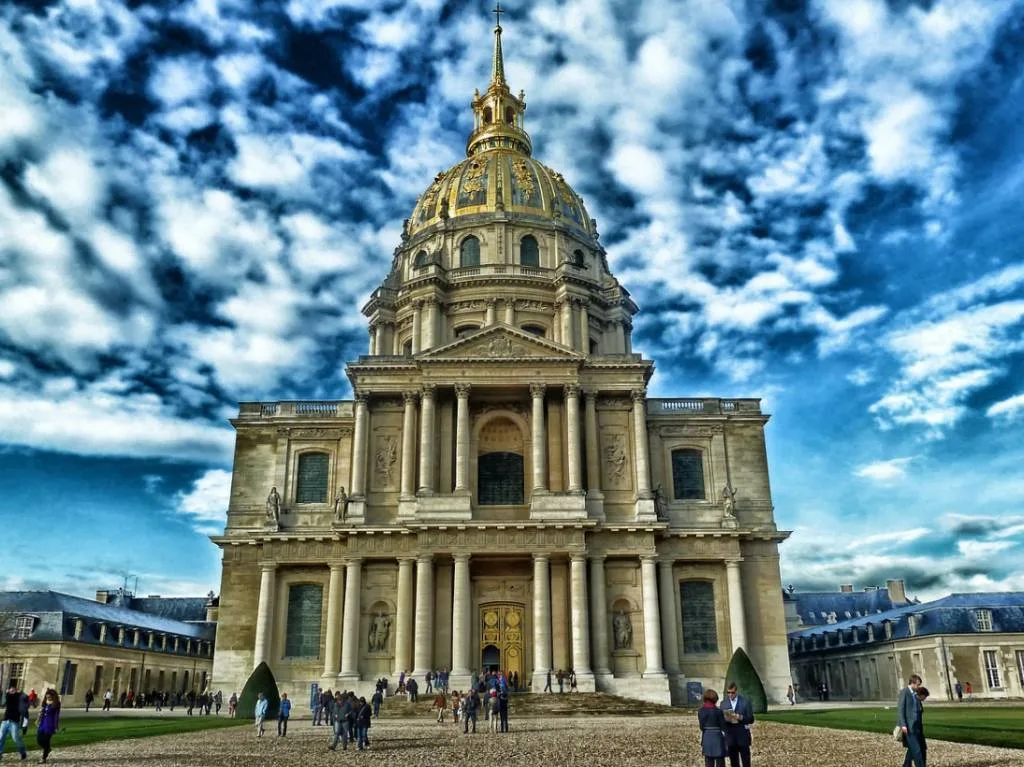
8. The Dome of the church is the highest in Paris
The two chapels that were built are now known as the “Cathedral of Saint-Louis des Invalides” (the veterans chapel), and the “Dôme des Invalides” (the royal chapel).
The dôme of the royal chapel is the highest in all of Paris with a total height of 107 meters (351 ft). That’s higher than other famous churches in Paris such as the Notre-Dame (69 meters – 226 ft) and the Sacré-Coeur (83 meters – 272 ft).
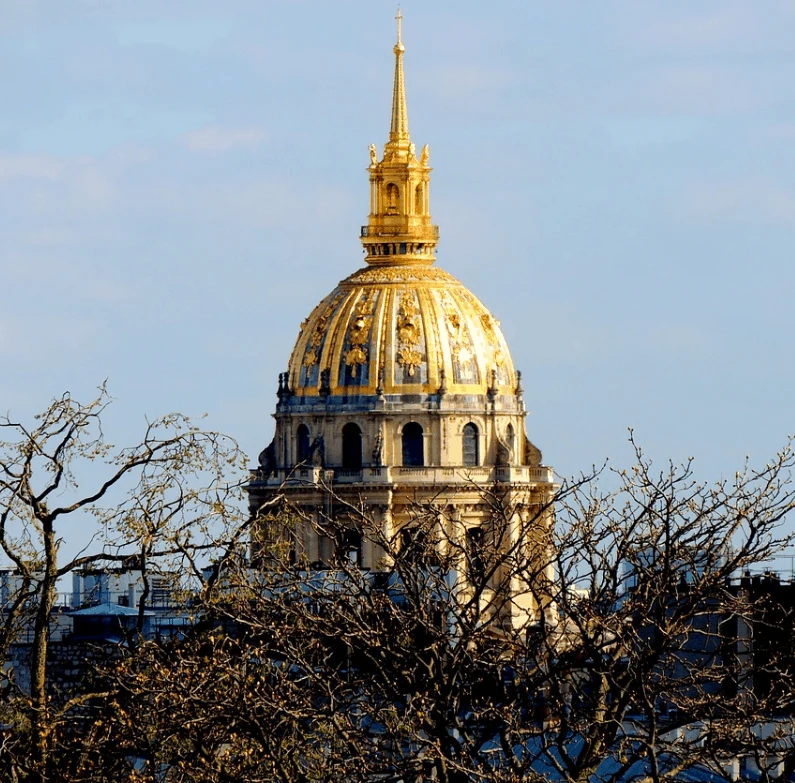
9. Napoleon Bonaparte has his final resting place in the church
Napoleon Bonaparte was one of the best military leaders France has ever known, and arguably that the world has ever seen. In that sense, it seems logical that his body should be buried inside the church along with numerous other important French military figures.
Initially, he was buried in the place had died, Saint Helena, but King Louis Philippe arranged for his remains to be brought to Paris in 1840.
Actually burying Napoleon didn’t go so smoothly. They dug a hole in the middle of the church and this excavation process took over 20 years to complete.
Finally, in the year 1861, Napoleon’s crypt was ready and his remains found their final resting place.

10. The building became a military museum
The building served the purpose it was originally constructed for, which was to be a resting place for injured and retired veterans, until the early 20th century.
At the end of the 19th century, two museums were already present inside the building which were the “Artillery Museum” (Musée d’Artillerie – 1872) and the “Historical Museum of the Armies” (Musée Historique des Armées – 1896).
These museums were merged in the year 1905 into one museum which still exists today, the “Army Museum” (Musée de lArmée).

Quick Facts about Les Invalides
11. Les Invalides played a crucial role in the French Revolution as the rioters stole the cannons and muskets stored in their cellars to use for storming the Bastille, one of the most significant moments in the revolution.
12. The complex still has the facilities needed to serve its original purpose. This includes a retirement home, a medical and surgical center, and a center for medical consultations.
13. During his time as a military commander, Napoleon would visit Les Invalides, the place he would later be buried, several times to check on his wounded soldiers.

14. Napoleon is buried directly under the “Dôme des Invalides,” mandated by a law dated June 10, 1840.
15. Even though inaugurated in the year 1678, the dome of the royal chapel wasn’t fully completed until the year 1793.
16. The baroque dome of the chapel was inspired by the St. Peter’s Basilica in Rome, which is the biggest church in the world.
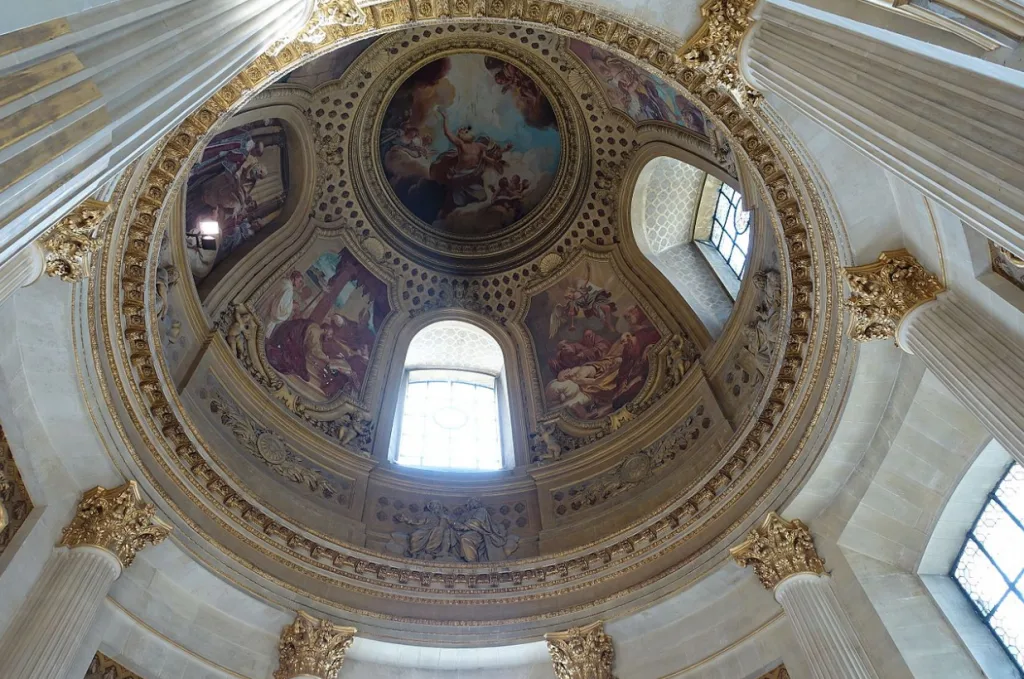
17. The dome of the chapel is also considered to be the epitome of French Baroque Architecture, a type of architecture that lasted from the early 17th century until halfway through the 18th century until it was followed by French Neoclassical architecture.
18. The Dôme des Invalides is decorated with a total of 12.65 kilograms (27.9 lb) of gold leaf.
19. The remains of Napoleon were brought back from an island called Saint Helena in 1840 and this event is referred to as “le Retour des Cendres,” which literally translates to “the Return of the Ashes.”

20. Even though the event of the return of Napoleon’s remains is referred to as the return of the ashes, Napoleon wasn’t actually cremated, so it was his actual body (what remained of it) that was returned.
21. Napoleon isn’t the only one buried at Les Invalides as dozens of important French Military leaders are buried alongside him. These include some of his family members, some military leaders who served under him, and various other French military heroes.
